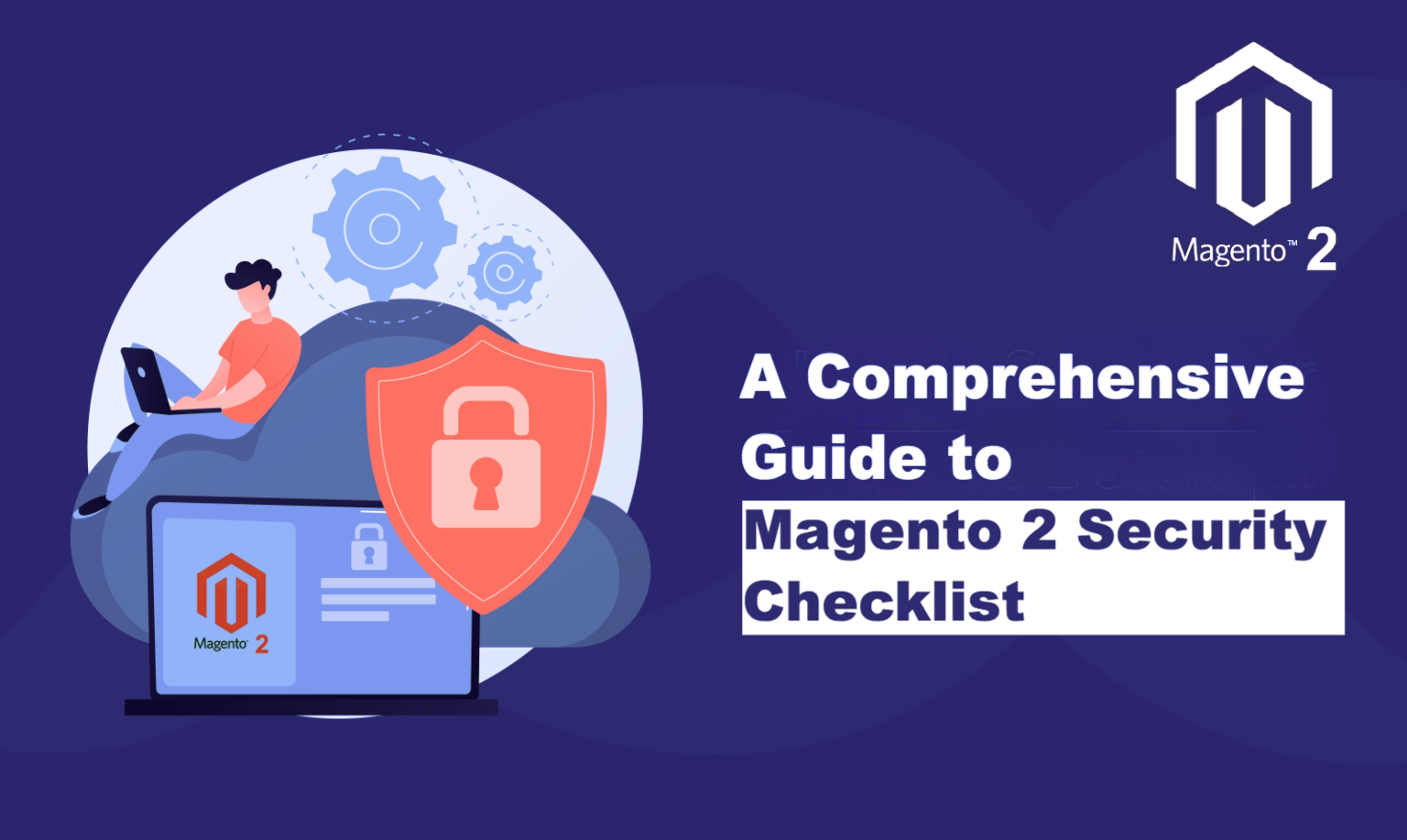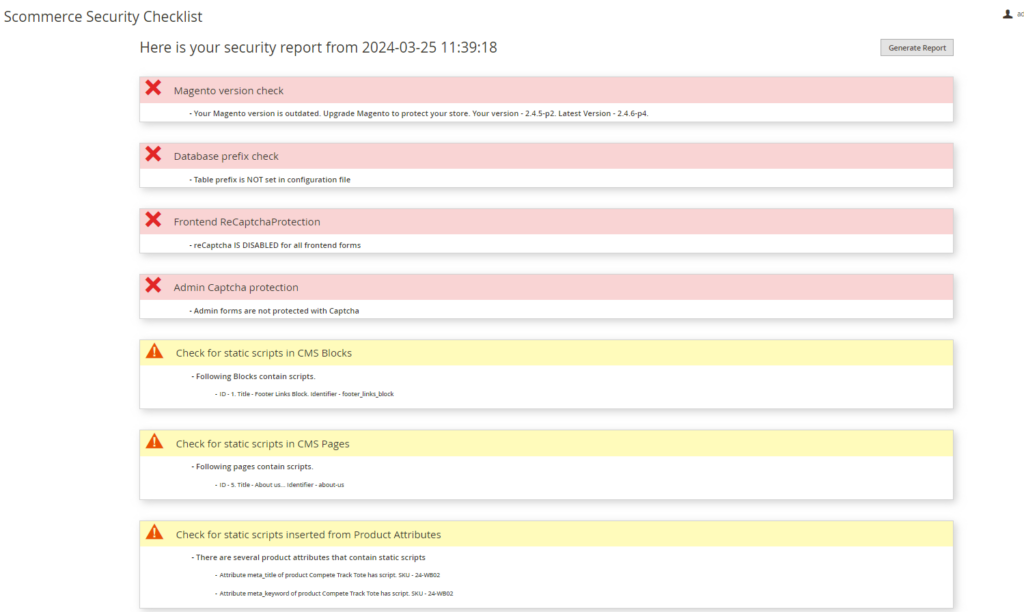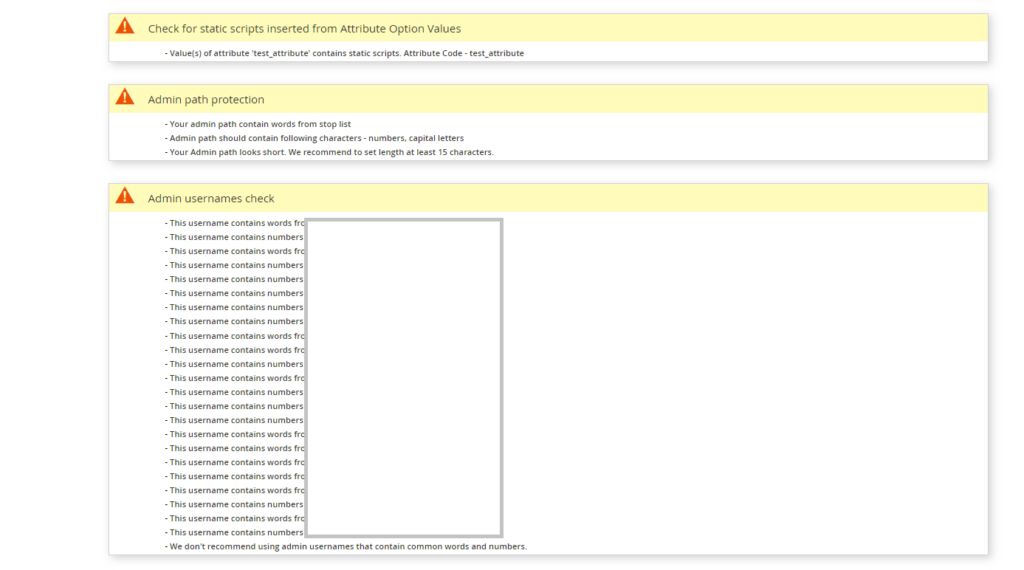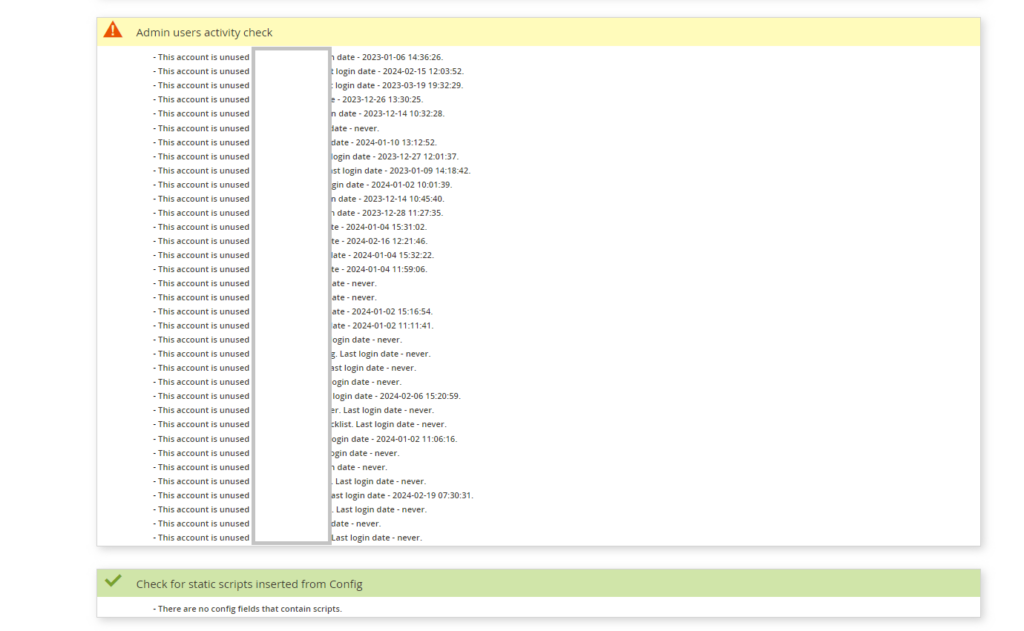
E-commerce has emerged as a cornerstone of the global In today’s digital era, the landscape of global commerce has shifted significantly towards e-commerce. With the exponential growth of online shopping, safeguarding the security of your e-commerce establishment is paramount. Recognized as a cornerstone in the e-commerce domain, the Magento 2 Security Checklist extension by Scommerce Mage offers a robust security checklist designed to fortify your online store against potential threats and vulnerabilities. Embark on a journey through our comprehensive guide, where we dissect the Magento 2 Security Checklist meticulously. Together, we’ll navigate through the critical facets influencing security in Magento 2, while addressing the diverse security challenges prevalent in e-commerce environments.
Understanding Magento 2 Security Checklist
Let us look into security optimization with the Magento 2 Security Checklist, a pivotal extension tailored for Magento 2 stores. Seamlessly integrated, this indispensable tool empowers merchants to safeguard their online establishments with a suite of cutting-edge features. With our real-time Security Dashboard Widget, gain insightful glimpses into your store’s security status at a glance. Visualize your security posture effortlessly with intuitive indicators—a green check mark symbolizing passed checks and a red cross mark signifying failed checks. Stay informed with a detailed summary presenting your Security Score Percentage, offering a comprehensive overview of your store’s security health. Enhance your store’s resilience against malicious activities with frontend and backend Captcha Checks, ensuring only legitimate users access your platform.
Receive instant alerts and notifications regarding Database Prefix vulnerabilities, enabling swift action to mitigate risks. Strengthen administrative access by monitoring Admin Username and Password strength, fortifying your first line of defense. Validate your Magento version and security patches seamlessly, ensuring your store stays up-to-date with the latest security enhancements. With both manual and scheduled security checks, customize your security protocols to suit your store’s unique requirements. Elevate your store’s security framework with the Magento 2 Security Checklist—an indispensable companion for proactive security measures.
Key Factors Impacting Security in Magento 2
- Server Security: Securing the server hosting your Magento 2 store is the first and foremost step in ensuring its security. This includes implementing firewalls, regular security updates, SSL certificates, and other server-level security measures to protect against unauthorized access and malicious attacks.
- File Permissions: Setting appropriate file permissions is crucial to prevent unauthorized access to sensitive files and directories within your Magento 2 installation. The Magento 2 Security Checklist provides recommendations for configuring file permissions to minimize security risks and ensure the integrity of your store’s files and data.
- Secure Admin Access: Admin access to your Magento 2 store is a potential entry point for attackers. By implementing strong password policies, two-factor authentication, IP whitelisting, and other security measures, you can enhance the security of your admin panel and protect it from unauthorized access.
- Data Protection: Protecting customer data is paramount in e-commerce. The Magento 2 Security Checklist includes recommendations for encrypting sensitive data, implementing secure payment gateways, regular data backups, and other measures to safeguard customer information and prevent data breaches.
Exploring Security Threats and Vulnerabilities
E-commerce stores are prime targets for cybercriminals due to the sensitive financial and personal information they store. Some common security threats and vulnerabilities that e-commerce stores, including Magento 2 stores, may face include:
- Phishing attacks: Cybercriminals may attempt to steal sensitive information, such as login credentials and payment details, by impersonating legitimate entities and tricking users into providing their information.
- Malware and ransomware: Malicious software can infect e-commerce websites and compromise sensitive data, disrupt operations, or extort money from store owners through ransomware attacks.
- SQL injection and cross-site scripting (XSS): These vulnerabilities can be exploited by attackers to inject malicious code into web applications, compromise user data, and gain unauthorized access to the website.
Challenges in Securing Magento 2 Stores
Despite the availability of security measures and best practices, securing Magento 2 stores presents several challenges, including:
- Complexity: Magento 2 is a complex platform with various components and extensions, making it challenging to ensure comprehensive security coverage.
- Patch management: Keeping Magento 2 up to date with the latest security patches and updates can be challenging, especially for store owners with limited technical expertise or resources.
- Third-party integrations: Integrating third-party extensions and services with Magento 2 introduces additional security risks, as these integrations may not always adhere to the same security standards as the core platform.

Importance of Considering Impact
When making decisions about securing Magento 2 stores, it’s crucial to consider the impact on various stakeholders, including customers, administrators, and developers. Balancing security requirements with usability, performance, and user experience considerations ensures a seamless and secure shopping experience for customers while maintaining operational efficiency for administrators and developers.
Magento 2 Security Checklist: A Solution for Store Owners
The Magento 2 Security Checklist provides a practical and actionable framework for store owners to enhance the security of their Magento 2 stores. By following the guidelines outlined in the checklist, store owners can mitigate security risks, protect sensitive data, and safeguard their e-commerce businesses against potential cyber threats and attacks. The checklist covers essential security measures across various aspects of Magento 2, including server security, file permissions, admin access, and data protection.
Key Features of the Magento 2 Security Checklist Module:
- Real-time Security Dashboard Widget: Instantly monitor your store’s security status with a dynamic dashboard widget, providing real-time insights at a glance.
- Comprehensive Checks: Covering critical aspects such as ReCAPTCHA, Database Prefix, Admin Credentials, Magento Version, and Security Patches, ensuring thorough examination of your store’s security posture.
- Visual Indicators: Easily discern the status of each security check with intuitive visual cues, featuring green check marks for passed checks and red cross marks for failed ones, enabling quick identification of potential vulnerabilities.
- Summary with Security Score Percentage: Gain a consolidated overview of your store’s security health, including the number of passed and failed checks, along with a calculated security score percentage for comprehensive assessment.
- Frontend and Backend Captcha Checks: Fortify your store’s defense mechanisms against automated attacks by verifying both frontend and backend Captcha settings, ensuring robust protection.
- Database Prefix Alert and Notification: Identify potential security risks associated with the absence of a database prefix and receive timely alerts for proactive mitigation.
- Admin Username and Password Strength Display: Promote strong security practices by evaluating the strength of admin usernames and passwords, enhancing the overall security posture of your store.
- Magento Version and Security Patches Verification: Verify if your store is running the latest Magento version and check for installed security patches effortlessly, with a convenient “Contact Us” button available for further assistance.
- Links, Tool Tips, and Guides for Detailed Recommendations: Access additional insights and recommendations for each security check through provided links, tooltips, and comprehensive guides, facilitating informed decision-making.
- Manual and Scheduled Security Checks: Flexibly conduct security checks either manually or schedule automated runs at specified intervals using cron jobs, ensuring continuous monitoring and proactive security maintenance.
Available Security Checks
- Magento Version Check:
- Ensure your Magento version is up to date for enhanced security.
- Compare your current version with the latest version (2.4.6-p4) to identify any updates needed.
- Database Prefix Check:
- Check if the table prefix is set in the configuration file to enhance database security.
- Admin Captcha Protection:
- Verify if admin forms are protected with Captcha to prevent automated attacks.
- Admin Path Protection:
- Review the admin path configuration to ensure it contains recommended characters and adheres to recommended length guidelines.Your admin path contains words from the stop list, which could make it vulnerable to dictionary attacks.
- Admin paths should contain a combination of numbers, capital letters, and special characters for enhanced security.
- Your Admin path looks short. We recommend setting a length of at least 15 characters to increase complexity and thwart brute force attacks.
- Admin Usernames Check:
- Review admin usernames to avoid common words, numbers, or patterns that could pose security risks.
- Admin Users Activity Check:
- Identify unused admin accounts and review their last login dates to monitor account activity and potential security threats.
- Frontend ReCaptcha Protection:
- Enable ReCaptcha for frontend forms to protect against automated bot attacks on various customer-facing forms.
- Check for Static Scripts Inserted from Config:
- Verify if any static scripts are inserted from configuration fields, which could indicate a security vulnerability.
- Check for Static Scripts in CMS Blocks and Pages:
- Ensure there are no static scripts inserted into CMS blocks or pages, which could compromise site security.
- Check for Static Scripts inserted from Product Attributes:
- Ensure there are no static scripts inserted from product attributes, which could compromise site security.
- Admin Password Protection:
- Enforce regular password changes and set a password lifetime of less than or equal to 3 months to enhance admin account security.
How to Use the Magento 2 Security Checklist Module:
- Accessing the Security Checklist Module:
- Log in to your Magento 2 admin panel using your credentials.
- Navigate to the “Security Checklist” module located in Admin>System>Scommerce Security>Security Checklist.
- Dashboard Overview:
- Upon entering the Security Checklist Report, you’ll be greeted by a comprehensive dashboard providing an overview of your store’s security status.
- The dashboard displays key metrics such as the total number of security checks, passed checks, failed checks, and the overall security score percentage.
- Navigating Security Checks:
- Explore the list of available security checks categorized under various sections such as “Magento version check,” “Admin Captcha protection,” “Database prefix check,” and more.
- Each of the checks contains detailed information and recommendations for securing your Magento 2 store.
- Conducting Security Checks:
- Initiate manual security checks by clicking on the “Generate Report” button at the top.
- Monitor the progress of each security check in real-time and view the results upon completion.
- Interpreting Results:
- After running security checks, review the results displayed on the dashboard.
- Utilize Various Visual indicators to read the entire report.
- Detailed Recommendations:
- Click on individual security checks to access detailed recommendations and guidelines for improving your store’s security.
- Benefit from additional insights, links, tooltips, and comprehensive guides to implement recommended security measures effectively.
- Quick Improvements: Based on the suggestions you can quickly improve the security of your store. for example:-
- Change Admin URL:- if your admin path is not secure navigate to Admin>Stores>Configuration>Advanced>Admin>Admin Base URL ans set “Use custom Admin URL” to “Yes” and then add in your custom Admin URL.

- Enable Recaptcha:- Go to Admin>Stores>Configuration>Security>Google ReCaptcha Admin Panel/Google ReCaptcha Storefront>ReCaptcha V3 invisible and add in the Google Website Key and API secret Key. These keys can be obtained here.





By following these steps and leveraging the features of the Magento 2 Security Checklist module, store owners can effectively enhance the security of their Magento 2 stores and protect them from potential cyber threats and attacks. Additionally, staying informed about the latest security trends and best practices in e-commerce security is essential to adapt and evolve your store’s security strategy accordingly.
In conclusion, the Magento 2 Security Checklist module offers a comprehensive solution for store owners to enhance the security of their Magento 2 stores effectively. By implementing the recommended security measures and following best practices, store owners can protect their business, customer data, and reputation from potential cyber threats and ensure a safe and secure shopping experience for their customers.






